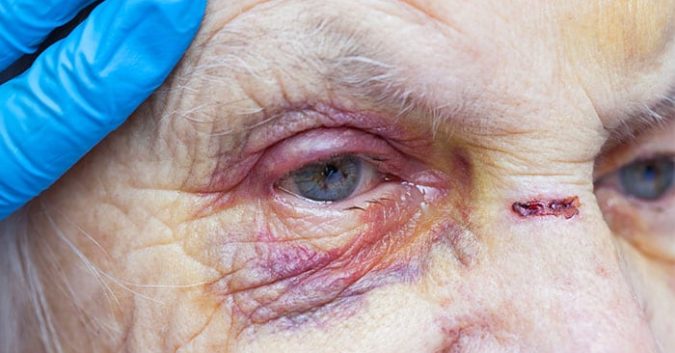Elder abuse is a substantial public health problem, threatening the health and human rights of millions of older adults all over the world. In the U.S. alone, authorities receive more than half 1 million reports of elder abuse every year.
Sadly, a much larger proportion of events go unreported: Research estimates only 1 in 14 cases reach authorities. This is either because the victim fears repercussions, blames themselves, or is unable to for health reasons, for example; or, a witness assumes someone else will take care of the situation or doesn’t take it seriously themselves. Abuse against the elderly can also take many forms, some of which are difficult for bystanders – even health professionals – to recognize. Because of this, the extent of elder abuse is poorly understood and often dismissed.
Ignorance of the risks and surefire signs of abuse allows the cycle to continue, but awareness can make a big difference. The ability to detect and report abuse or neglect of a senior, especially when they are unable to do so themselves, should be exercised under all circumstances. The key here is education – and this month is the time to spread the word.
What Is Elder Abuse Awareness Month?
Elder Abuse Awareness Month is a national awareness campaign dedicated to the prevention of elder abuse. Throughout June, senior citizens, caregivers, governments, and private sector organizations come together to address reporting, policy, and educational issues inhibiting our progress toward abuse-free conditions.
Partway through the month-long campaign is World Elder Abuse Awareness Day (WEAAD). Held on June 15 each year, this day was established in 2012 by the United Nations to draw global attention to the elder abuse.
Since elder abuse knows no continental boundaries, the UN calls on the international community to unite against it. The organization has found that response to abuse demands knowledge of cultural differences, such as views on marriage and social hierarchy, which create culturally specific risk factors. But in both developed and developing countries, 1 trend is shared by all societies: that elder abuse is seen as a taboo and is severely underestimated.
Start by Recognizing the Signs
Due to physical, mental, and emotional vulnerabilities of older citizens, this demographic is unfortunately an open target for abuse and exploitation. Abuse can come in the form of intentional acts or failure to act, but both are just as serious as the other.
According to the CDC and the National Center on Elder Abuse, there are 6 main types of elder abuse inflicted by another person: physical, sexual, emotional, or financial abuse, neglect, and abandonment. Last, but certainly not least, is self-neglect, which can arise from the actions of a mentally competent person on themselves.
Although elder abuse can be very difficult to identify, there are certain warning signs and risk factors to look out for depending on its context. It’s important to first recognize that elder abuse can occur anywhere. An older person can be abused in their own home, via the phone or computer, in a care facility, or even at the hands of a family member.
In care facilities, for example, the problem is so common that 30 percent of the nation’s nursing homes have been cited. This is an extremely worrisome statistic considering this is the place family and friends would least expect a loved one’s wellbeing to be compromised. Unfortunately, to avoid financial or legal consequences, these incidents are often covered up by the perpetrator or the nursing home itself. Diligent awareness of nursing home abuse warning signs is the only way to prevent wrongdoing from slipping through the cracks.
This Has Gone on Long Enough
By 2050, the global population of people over 60 will more than double, outstripping the number of younger people. Of the current population of seniors, 4 to 6 percent suffer some sort of abuse. If this startling rate continues as the population grows, matters are due to become a lot worse.
To derail this wretched pattern of abuse, the world needs to embrace every opportunity to recognize the unique problems that elders face. In the U.S., we have a responsibility to provide American seniors with the support, protection, and respect they deserve as productive members of society.
Whether you are an older adult, caregiver, or loved one of an elder, there are many straightforward ways to play a part in elder abuse prevention. HelpGuide.org, the National Council on Aging (NCOA), and many other resources provide comprehensive information on the basics of elder abuse and what you can do as the victim, caregiver, or family member. However small a contribution you can make to prevent mistreatment, it’s time to protect those in need of our help.
